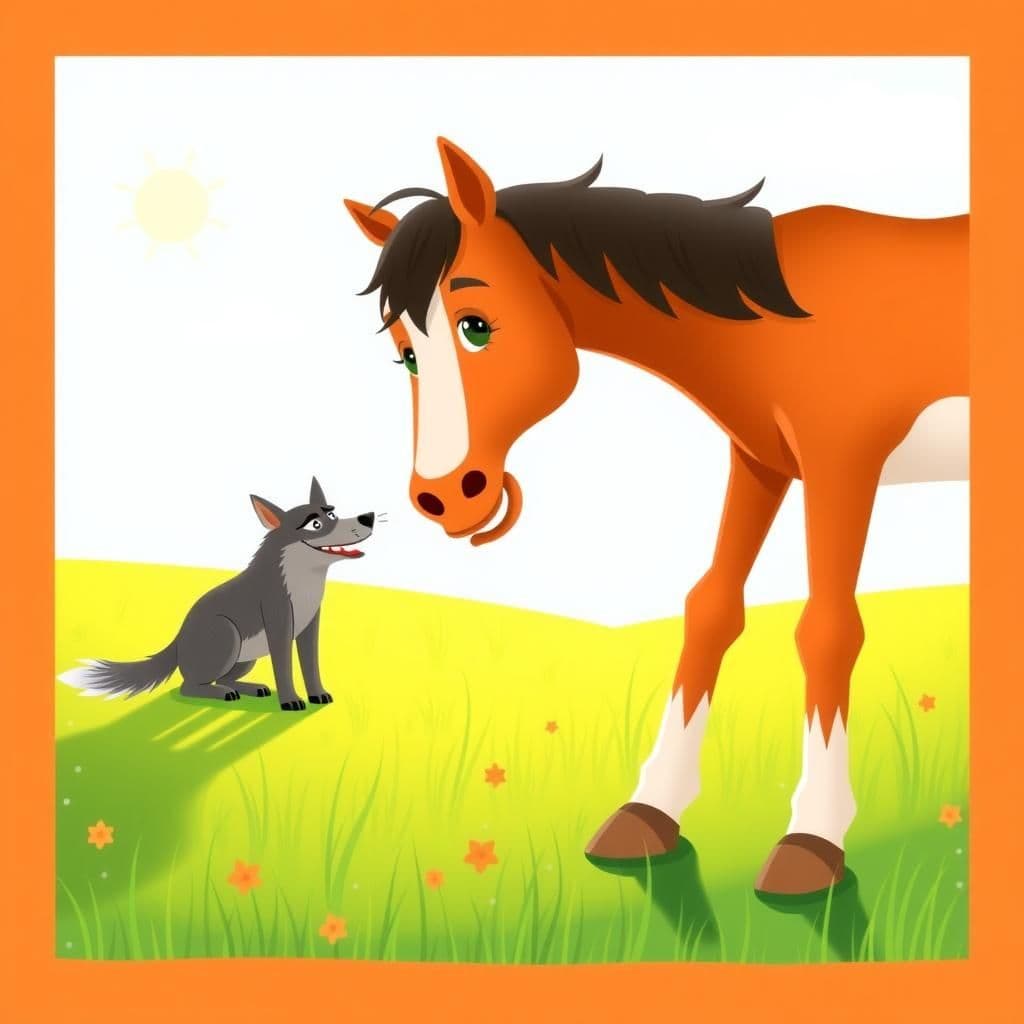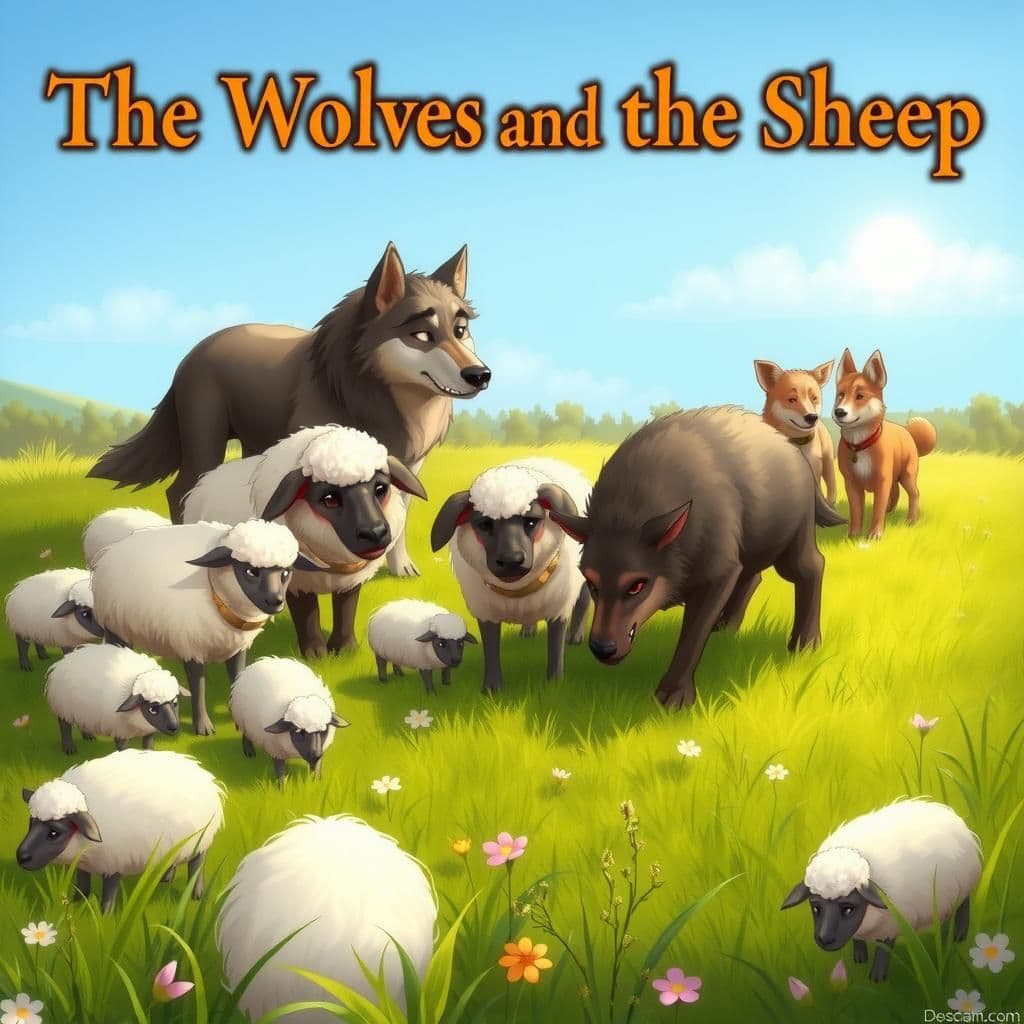The Wolf and the Horse

Story Summary
In "The Wolf and the Horse," a cunning Wolf attempts to deceive a Horse by claiming to have left a field of untouched oats for him. However, the Horse sees through the ruse, pointing out that if oats were suitable for the Wolf, he would have eaten them himself. This famous fable illustrates a powerful moral about how individuals with a bad reputation often struggle to be trusted, even when they try to perform good deeds, highlighting the impact of storytelling with morals in our understanding of character and trust.
Click to reveal the moral of the story
Beware of the motives of those with a bad reputation, as their good deeds may be self-serving.
Historical Context
This fable mirrors themes found in Aesop's Fables, specifically the idea that past behavior taints present intentions. The story reflects a cultural skepticism toward those with dubious motives, suggesting that a history of deceit undermines trust, a concept prevalent in various folklore traditions worldwide. The moral warns against being easily swayed by seemingly benevolent actions from those with a history of wrongdoing, a lesson that resonates across cultures and has been retold in different forms throughout history.
Our Editors Opinion
In modern life, the story reminds us to be cautious of individuals with questionable motives, as their good actions may serve ulterior purposes. For instance, if a notorious scammer offers a charitable donation to gain public favor, people might remain skeptical, recognizing that past behavior often predicts future intentions.
You May Also Like

The Wolves and the Sheep
In "The Wolves and the Sheep," a classic tale from famous moral stories, the cunning Wolves persuade the naive Sheep to dismiss their protective Dogs by claiming the Dogs are the true source of conflict. This educational moral story illustrates the dangers of misplaced trust, as the defenseless Sheep fall victim to the Wolves' deceit, highlighting a vital life lesson about the importance of heeding wise counsel for personal growth.

The Wolf and the Feeding Goat
In "The Wolf and the Feeding Goat," a cunning Wolf attempts to lure a Goat down from her safe perch by boasting about the abundant, albeit misleading, food below. The clever Goat counters his claims by referencing the failed circus-poster crop, highlighting the Wolf's deceptive nature. This captivating moral story serves as an educational reminder of the importance of discernment in the face of temptation and false promises.

The Cat and the Mice
In this simple moral story, a Cat enters a house overrun by Mice and captures them one by one, prompting the remaining Mice to stay hidden. To lure them out, she pretends to be dead, but one clever Mouse warns that those who have been deceived will always remain cautious. This famous moral story teaches a valuable life lesson about the importance of vigilance after being tricked.
Other names for this story
Wolf's Deception, The Clever Horse, Oats of Deceit, Trusting the Wolf, The Horse's Wisdom, A Cunning Encounter, Feeding the Trust, The Trickster's Feast
Did You Know?
This fable highlights the theme of skepticism towards the motives of those with a dubious reputation; even when they seem to act kindly, their past actions lead others to doubt their sincerity. It serves as a reminder that trust is hard to regain once it has been lost due to previous misdeeds.
Subscribe to Daily Stories
Get a new moral story in your inbox every day.